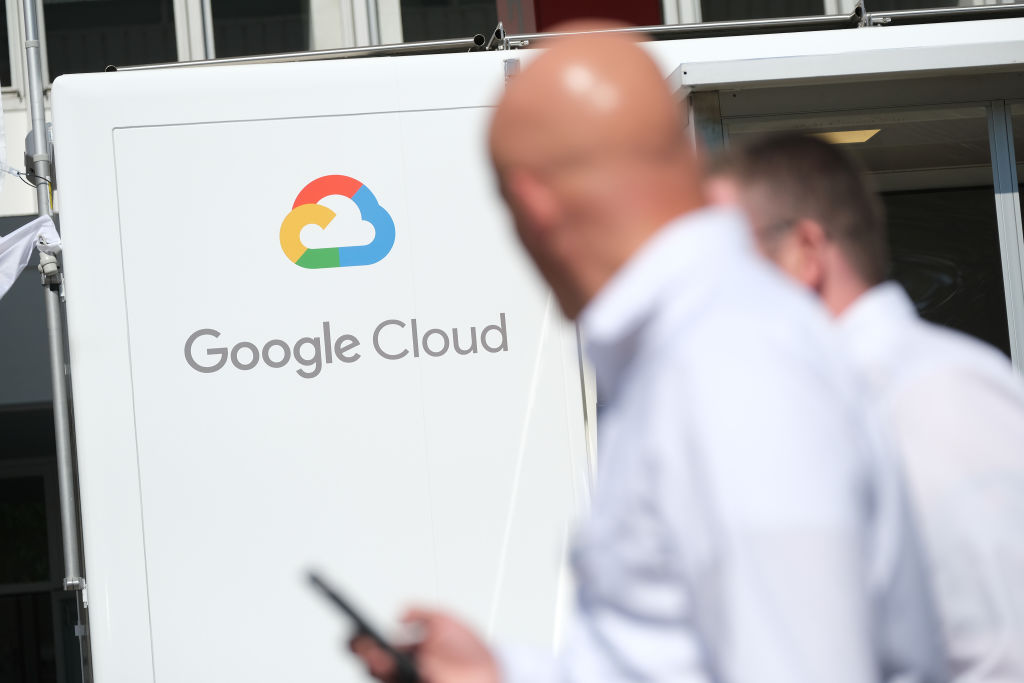AI language models could help diagnose schizophrenia
SOURCE: HTTPS://WWW.SCIENCEDAILY.COM/
OCT 09, 2023
Google Cloud claims ‘most powerful’ publicly available machine learning cluster
SOURCE: TECHMONITOR.AI
MAY 11, 2022

Google Cloud has unveiled what it describes as the “world’s largest publicly available machine learning mega cluster”, which will deliver nine exaflops of compute power to users of Google Cloud Platform. Artificial intelligence workloads are increasingly important for many cloud users, and Google Cloud will be hoping its new cluster will prove appealing to customers.

Google Cloud is launching what it says is the world’s most powerful machine learning cluster. (Photo by Sean Gallup/Getty Images)
Revealed as part of the company’s Google I/O developer conference, the machine learning cluster will be powered by the latest v4 version of Google’s in-house Tensor Processing Units, which is designed to run its cloud services as well as other platforms such as YouTube.
“Google Cloud’s ML cluster enables researchers and developers to make breakthroughs at the forefront of AI, allowing them to train increasingly sophisticated models to power workloads such as large-scale natural language processing (NLP), recommendation systems, and computer vision algorithms,” Sachin Gupta, vice president and general manager for infrastructure and Max Sapozhnikov, product manager for cloud TPU said in a joint statement. “At nine exaflops of peak aggregate performance, we believe our cluster of Cloud TPU v4 Pods is the world’s largest publicly available ML hub in terms of cumulative computing power.”
Based at one of the company’s data centres in Oklahoma, the ML cluster is powered by a series of Cloud TPU v4 pods, each of which consists of 4,096 chips connected in an ultra-fast interconnected network. Google says each pod has “industry leading” bandwidth of six terabits per second, enabling it to rapidly digest information and train large AI models. The Oklahoma data centre operates on 90% renewable energy.
The machine learning cluster is available in preview from today.
Increasing numbers of businesses are turning to AI and ML to help improve efficiency and digitise their operations. According to a McKinsey study, ‘The State of AI in 2021’, published last year, 56% of more than 1,800 organisations polled around the world said they had adopted AI in at least one function of their business, up from 50% in 2020.
The role of cloud computing in successful AI adoption was also highlighted in the McKinsey study, which identifies companies it describes as “AI high performers” – businesses which attribute at least 20% of their earnings to their AI implementation. This high-performance group run an average of 64% of their AI workloads in the cloud, compared to 44% for other respondents, suggesting cloud-based AI can offer better returns than on-premise systems.
The high-performing group “is also accessing a wider range of AI capabilities and techniques on a public cloud,” the McKinsey study says. “For example, they are twice as likely as the rest to say they tap the cloud for natural-language-speech understanding and facial-recognition capabilities.”
Google Cloud made several other announcements at I/O, including the launch of AlloyDB, a new PostgreSQL-compatible database service for highly demanding workloads. It claims this offers double the processing of the comparable service for transactional workloads offered by Amazon’s AWS, the world’s leading cloud platform.
Data, insights and analysis delivered to youVIEW ALL NEWSLETTERS By The Tech Monitor teamSign up to our newslettersSIGN UP HERE
Also available to Google Cloud Platform users from today is Immersive Stream, a new service that renders immersive 3D and augmented reality experiences and allows them to be streamed to mobile devices.
For security, Google Cloud has Network Analyzer, a new module in the platform’s Network Intelligence Center to enable developers to detect network failures and prevent downtime by pinpointing potential problems such as accidental misconfigurations and over-utilisation of services.
LATEST NEWS
Augmented Reality
Hi-tech smart glasses connecting rural and remote aged care residents to clinicians
NOV 20, 2023
WHAT'S TRENDING


Data Science
5 Imaginative Data Science Projects That Can Make Your Portfolio Stand Out
OCT 05, 2022

SOURCE: HTTPS://WWW.SCIENCEDAILY.COM/
OCT 09, 2023
SOURCE: HTTPS://WWW.THEROBOTREPORT.COM/
SEP 30, 2023
SOURCE: HTTPS://WWW.SCIENCEDAILY.COM/
AUG 08, 2023
SOURCE: HOUSTON.INNOVATIONMAP.COM
OCT 03, 2022
SOURCE: MEDCITYNEWS.COM
OCT 06, 2022